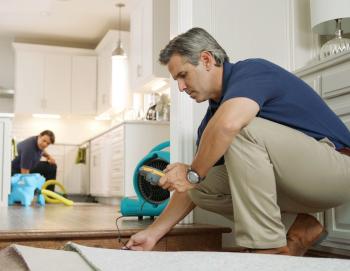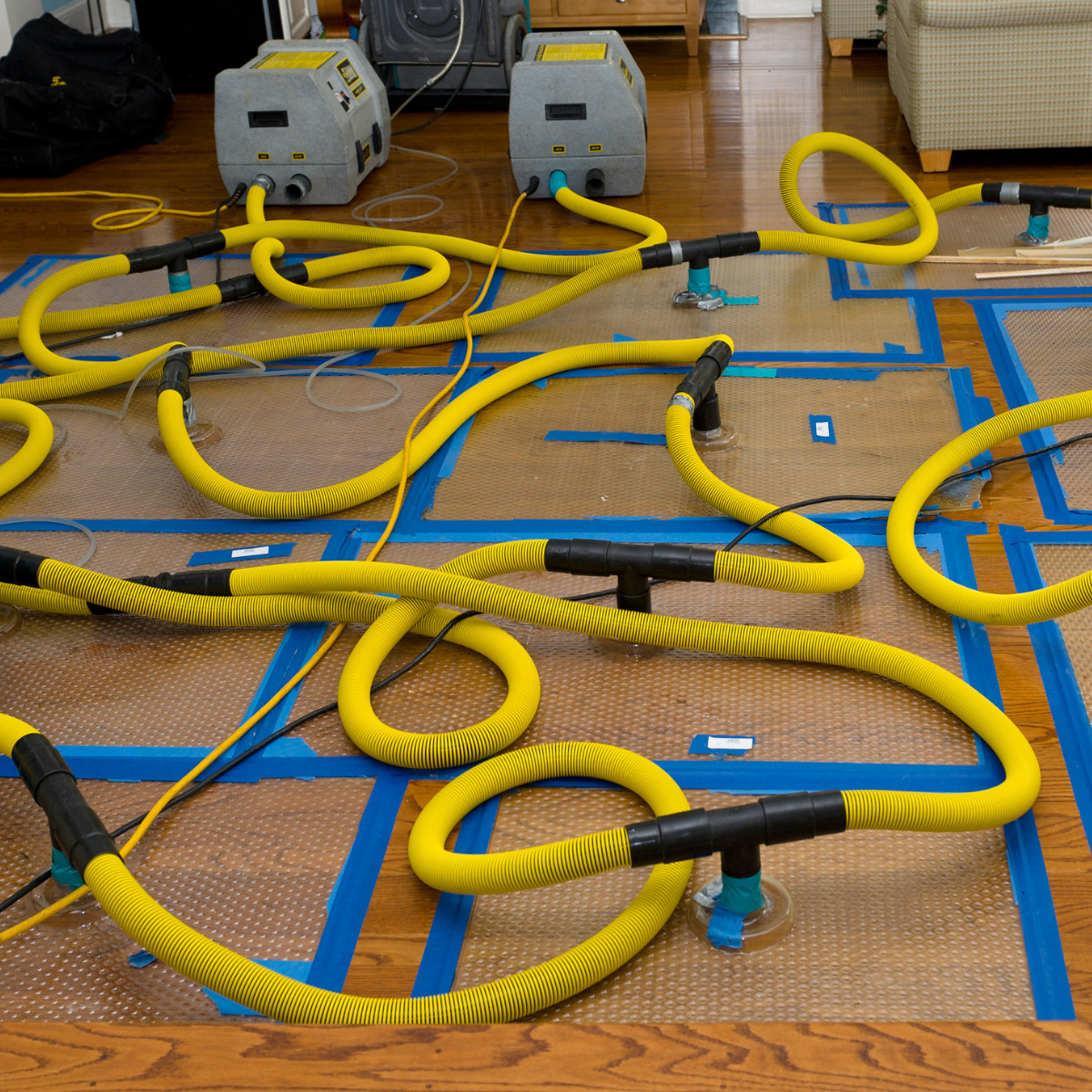A first-timer’s guide to understanding Water Damage Restoration
Wiki Article
Top Tips for Effective Water Damage Restoration: Protect Your Residential Property Today
Water damage can strike suddenly, triggering considerable disruption and prospective hazards. Efficient restoration needs a methodical strategy to lessen further damage. From examining the damage to executing precautionary steps, each step plays a vital function in safeguarding building. Understanding these approaches can make all the difference in the after-effects of a water-related crisis. What vital actions should be focused on to guarantee extensive defense?Examine the Damage Right Away
When a water damage event occurs, it is necessary to assess the damage immediately to alleviate additional issues. This preliminary evaluation assists determine the degree of the damage and recognizes affected areas. Water can leak right into wall surfaces, floors, and furniture, causing mold and mildew growth and architectural instability otherwise dealt with immediately. A comprehensive assessment should include inspecting for staining, moisture, and moldy odors, which show moisture existence. It is likewise crucial to record the damage via photographs and notes for insurance purposes. Involving specialists for an extra detailed assessment may be required, especially when taking care of concealed or considerable damage. Flood Cleanup Services. Early acknowledgment and exact analysis lay the structure for efficient restoration and safeguard the building from added issuesTurn off the Water Supply
Turning off the water supply is a vital step in preventing further damage throughout a water-related case. When a leak or flood occurs, prompt action is crucial to lessen the extent of the damage. Locating the major water shut-off valve should be a concern. This shutoff is commonly located near the water meter or where the water line goes into the residential property. When situated, turning the valve clockwise will stop the flow of water. In instances where the primary valve is inaccessible, specific shut-off valves for devices may also be used. Quickly shutting down the supply of water not only protects the property from extra damage yet likewise facilitates the succeeding restoration process, ensuring that recuperation efforts can begin right away.Eliminate Excess Water Quickly

Removing excess water quickly is vital for decreasing damage and preventing mold growth in impacted locations. The longer water remains in call with materials such as drywall, timber, and insulation, the greater the risk of architectural damage and the development of mold and mildew. Water Extraction And Drying. Homeowners should act swiftly to analyze the scenario and utilize ideal tools, such as wet vacuum cleaners or pumps, to draw out standing water efficiently. If the volume of water is considerable, calling specialist restoration services might be essential, as they can supply customized tools and know-how. Furthermore, removing furniture and items from the affected location can help to decrease damage and assist in the general restoration process. Timely action not only protects building yet likewise aids in a smoother healing journey
Dry the Affected Location
After removing excess water, it is vital to dry out the affected location extensively. This entails removing any type of standing water and enhancing air flow to assist in dissipation. Efficient drying will assist stop mold and mildew growth and further damage.
Eliminate Standing Water
Quickly attending to standing water is vital for efficient water damage restoration. The existence of stagnant water can result in more residential or commercial property damage and create a setting conducive to mold growth. To minimize these dangers, it is necessary to eliminate standing water as rapidly as possible. This procedure normally involves utilizing submersible pumps, wet vacuum cleaners, or specialized extraction equipment. Experts recommend reviewing the depth and level of the water prior to choosing the appropriate method for elimination. Safety safety measures should additionally be taken, consisting of wearing safety gear and making certain electrical energy is shut off in impacted locations. When the standing water is effectively removed, the drying procedure can begin, additionally safeguarding the property from ongoing damage.Increase Air Flow
Boosting air circulation is essential for efficiently drying out locations influenced by water damage. This process aids to quicken evaporation, lowering the risk of mold and mildew growth. Specialists often suggest making use of fans to produce a consistent air movement throughout the space. Positioning box followers in home windows can reel in fresh air, while high-velocity fans can guide airflow in the direction of wet surfaces. Flood Cleanup Services. Furthermore, opening windows and doors permits cross-ventilation, enhancing the drying procedure. Dehumidifiers can also be utilized to get rid of excess dampness from the air, further helping in drying out. By making sure that air distributes easily, residential or commercial property proprietors can considerably lessen the long-lasting impacts of water damage and shield the integrity of their structureInspect for Mold Growth
Mold and mildew growth is a serious more info problem following water damage, as it can cause health problems and structural deterioration. After any type of flooding or leaks, it is essential to conduct a thorough assessment of the influenced locations. This includes monitoring concealed spaces such as behind walls, under carpetings, and in attic rooms or basements where dampness may linger. Indicators of mold consist of a moldy odor, discoloration on surface areas, or visible development. Homeowner need to utilize safety gear when inspecting, as mold spores can posture health and wellness threats. If mold is spotted, it is vital to address it immediately, as delaying removal can worsen the problem and boost the threat of major health and wellness problems for occupants. Early intervention is vital to efficient mold and mildew monitoring.

Fixing and Bring Back Damaged Structures
When addressing water damage, it is necessary to first evaluate the structural stability of the impacted areas. This evaluation helps determine prospective threats and informs the needed repair approaches. Engaging expert restoration solutions assures that the restoration process is carried out safely and efficiently.Examine Structural Honesty First
Prior to starting any kind of water damage restoration, it is necessary to analyze the structural integrity of the damaged area. This examination assists recognize any kind of compromised aspects, such as light beams, foundations, or walls, which might posture safety and security threats - Water Damage Restoration. Checking for indicators of bending, fracturing, or mold and mildew development is important, as these indications can disclose underlying damage that calls for immediate attention. In addition, comprehending the level of the damage can direct restoration initiatives and figure out whether repairs are practical or if replacement is needed. It is vital to document findings thoroughly, as this information can be beneficial for insurance policy claims or future recommendation. Focusing on architectural evaluation assurances that restoration efforts proceed safely and properly, inevitably protecting the residential property and its ownersUsage Professional Restoration Services
Making use of specialist restoration services is essential for properly repairing and restoring broken frameworks after water cases. These specialists have the needed training, tools, and experience to assess and mitigate water damage extensively. They can identify surprise concerns, such as mold and mildew growth and structural weak points, that may not be promptly obvious. Specialist services likewise use sophisticated drying out methods and tools, making sure that all moisture is removed to stop more damage. Furthermore, they abide by industry standards and guidelines, guaranteeing that the restoration procedure is risk-free and reliable. By engaging restoration professionals, residential property owners can expedite recuperation, reduce lasting damage, and eventually shield their investment. This aggressive method is important in keeping the integrity and safety of afflicted structures.Protect Against Future Water Damage
To successfully stop future water damage, house owners must embrace a proactive technique to repair and maintenance. Normal inspection of roofing systems, seamless gutters, and downspouts is important; clogged seamless gutters can bring about water overflow and roof covering leakages. In addition, looking for leaks in plumbing components and devices can combat possible damage. Home owners must likewise take into consideration mounting sump pumps in cellars or low-lying areas to manage water accumulation. Securing fractures in foundations and making sure proper water drainage around the home are vital actions in securing against water invasion. Moreover, keeping humidity degrees with dehumidifiers can protect against mold and mildew development. By executing these safety nets, property owners can considerably minimize the danger of water damage and safeguard their building for the long term.When a water damage event occurs, it is crucial to examine the damage instantly to minimize more concerns (Water Damage Restoration). Removing excess water promptly is crucial for minimizing damage and avoiding mold and mildew development in influenced locations. Promptly attending to standing water is critical for effective water damage restoration. The visibility of stagnant water can lead to more residential property damage and develop an atmosphere favorable to mold development. Before launching any type of water damage restoration, it is vital to analyze the architectural integrity of the damaged area
Report this wiki page